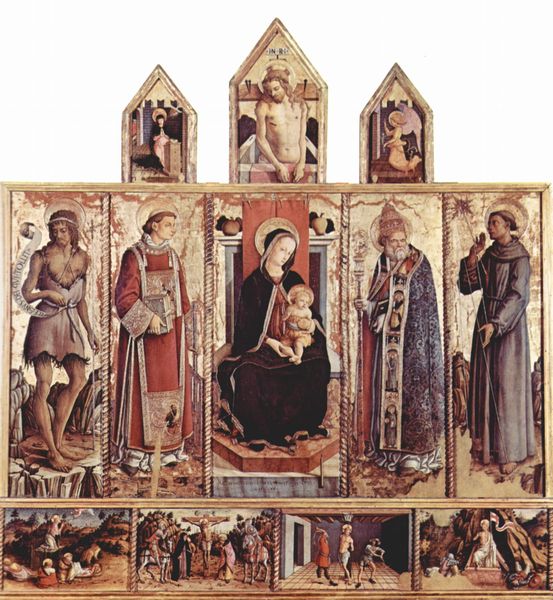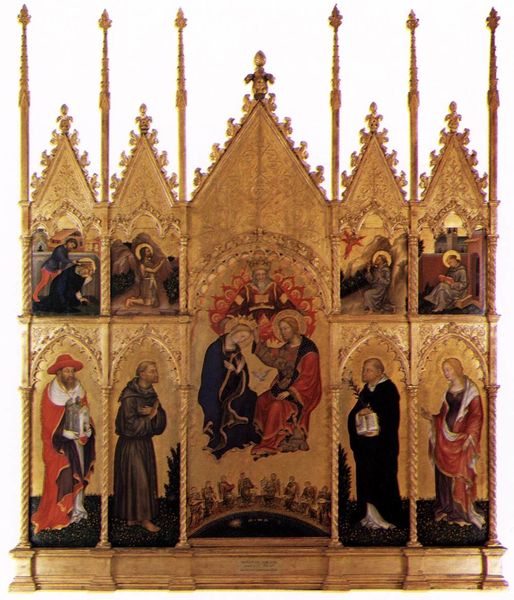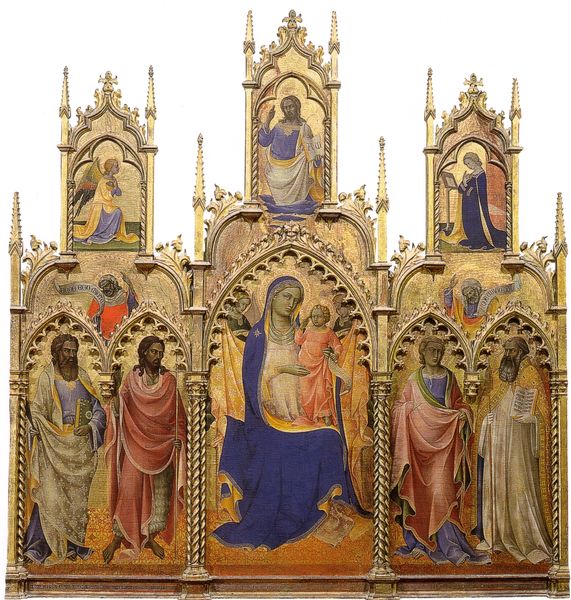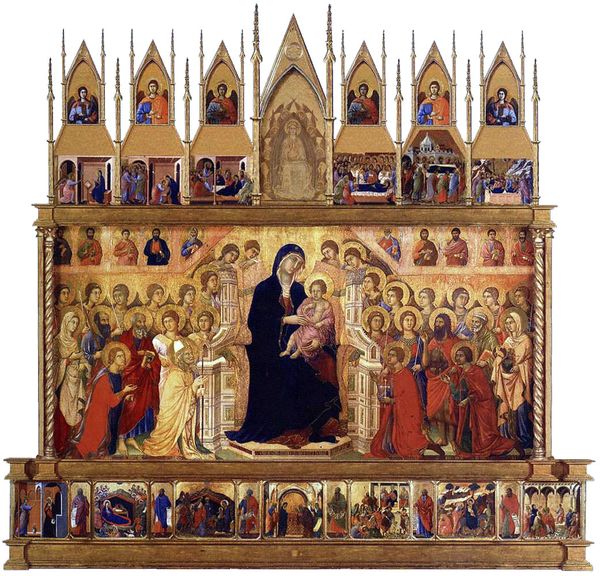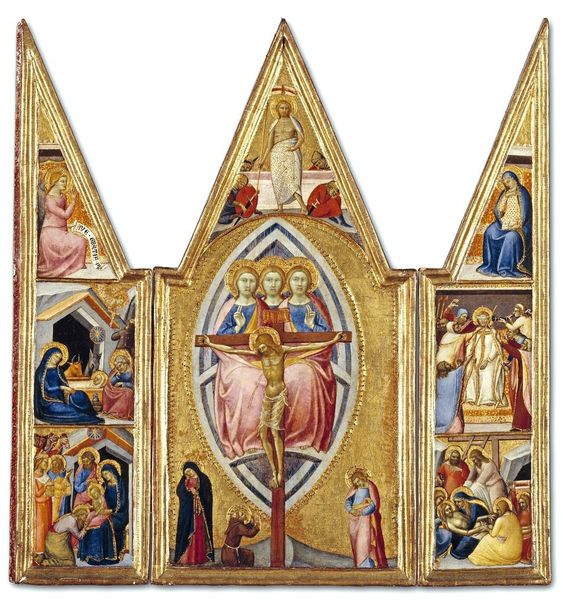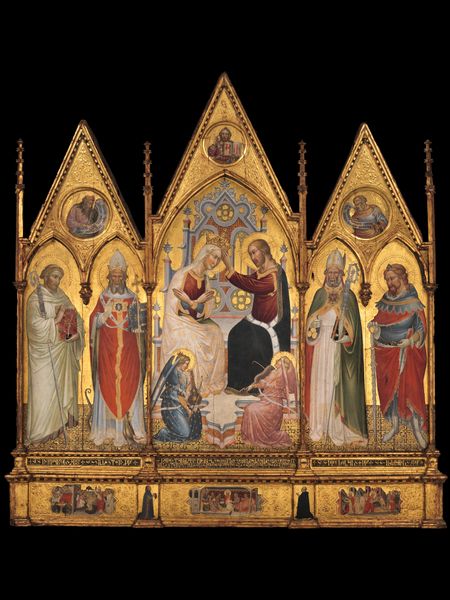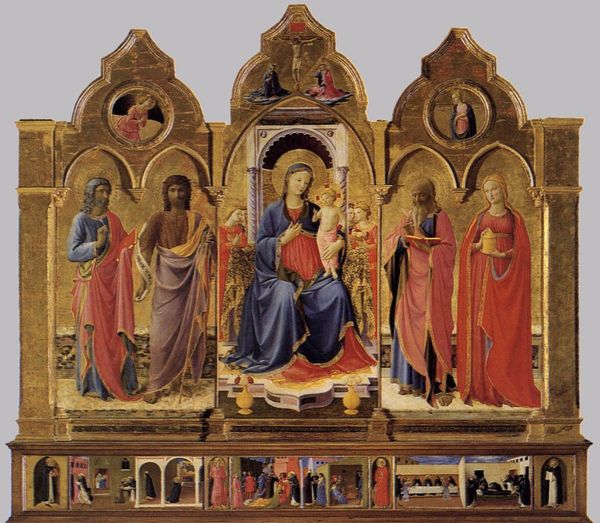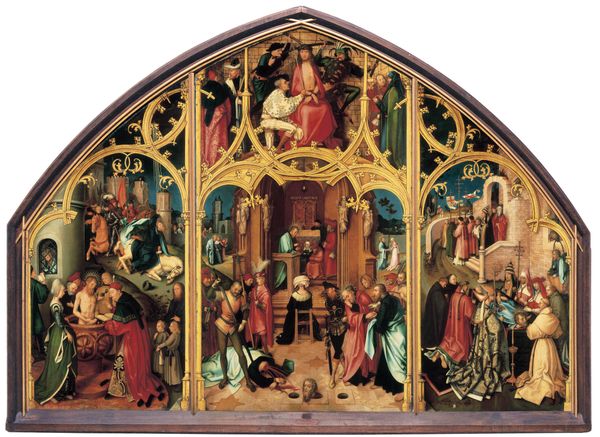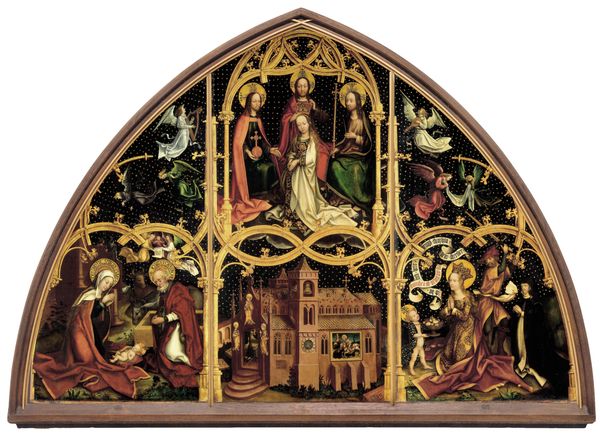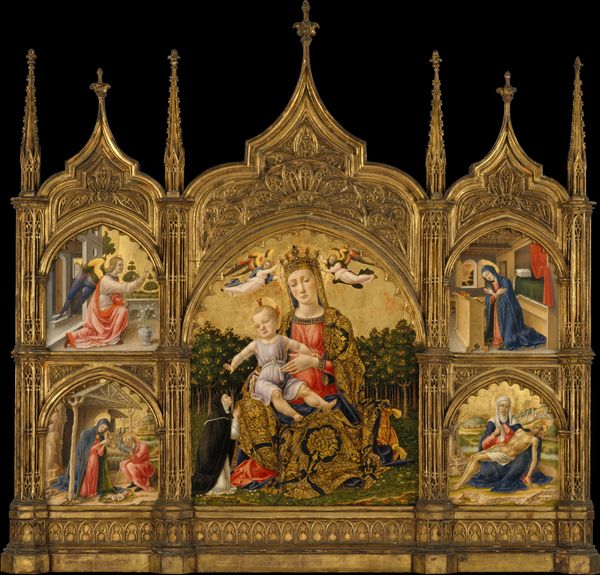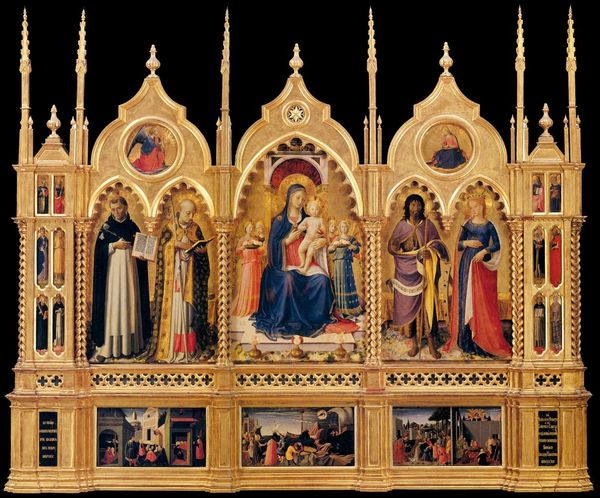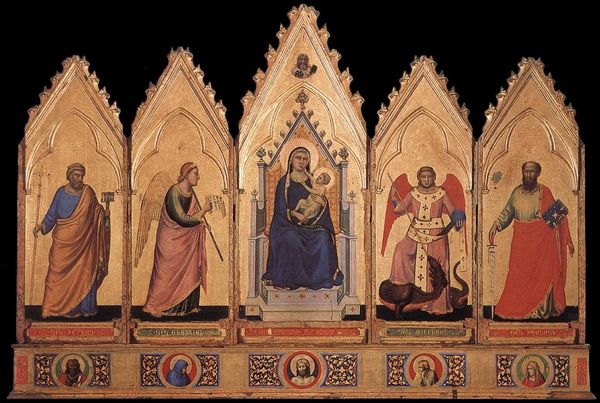
carving, tempera, painting, architecture
#
portrait
#
carving
#
tempera
#
painting
#
sculpture
#
figuration
#
traditional architecture
#
christianity
#
italian-renaissance
#
architecture
Copyright: Public domain
Curator: What strikes you about this image? I’m looking at Carlo Crivelli’s "Enthroned Madonna," created in 1473, and now residing in the National Gallery in London. It's tempera on wood and framed with detailed carving and architecture elements. Editor: It's striking how the architecture almost overwhelms the figures; they seem like characters carefully placed within an elaborate stage set. It creates a rather rigid feeling, quite unlike what you'd expect from a Madonna and Child piece. Curator: Absolutely, the architectural framing dominates. Considering the piece within its historical context, we must think about the patronage system of the time. These altarpieces served multiple roles – as religious icons and as statements of power and prestige by the commissioners, shaping both artistic choices and its public reception. Editor: You're right. Who were the intended viewers, and what sociopolitical messages were being subtly embedded within this artwork? Crivelli places the Virgin centrally, yes, but consider also how that central positioning supports the institution as a whole, creating a focal point that legitimizes all associated values and ideals. The surrounding saints, with their various symbols, create a whole rhetoric reinforcing prevailing views. Curator: Crivelli used tempera and meticulously layered paint, almost like enameling to render it with gem-like intensity, in sharp contrast to the muted tones we associate with Florentine art of the time. How does his detailed surface relate to devotion or the understanding of the role of holy figures in everyday life? It demands that we engage not just visually but physically, if only in our imaginations. Editor: The emphasis on ornamentation over naturalism is really compelling here, particularly given its social setting. Are we meant to focus on divine access granted via the wealthy? To feel like our relation with the divine has to go through opulence and the power of institutions? That certainly influences how we perceive piety or spirituality. Curator: I think that the meticulous detail does exactly what you said, while the flatness evokes iconographic conventions— it serves simultaneously to draw the viewer into this space and create distance, requiring careful navigation between faith, display of status and wealth. Editor: Ultimately, art such as this encourages me to see how much is really shaped by political considerations – that these holy figures are being used to serve social goals within and beyond the church and that the aesthetic quality may work toward such ends. Curator: Well, next time we might look into other artwork made by Crivelli that allows a contrasting understanding of the Italian Renaissance social narrative. Editor: Indeed, because there is a lot to still think about.
Comments
No comments
Be the first to comment and join the conversation on the ultimate creative platform.
